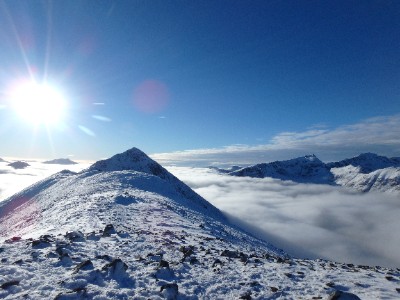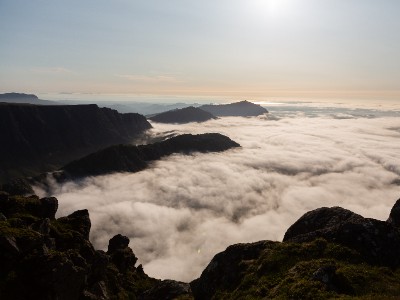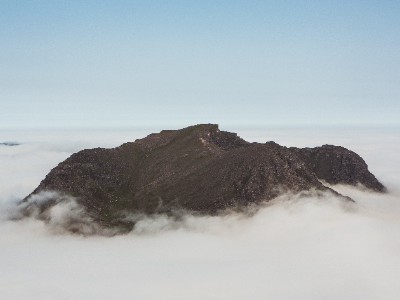Saturday 14th October 2023, 8:16am

By Kirsty Pallas, Mountain Safety Advisor, Mountaineering Scotland
Autumnís here. The mountains have started to turn orange, the temperatures are dropping, and this is the time of year when I start to look for a specific set of conditions Ė those needed to create a temperature inversion. But what makes inversions so special, and how do you find them?
What is an inversion?
Also known as a temperature inversion, itís a phenomenon where the temperature increases with altitude. Weíre used to experiencing the opposite in the mountains, and feeling cooler the higher we go. Because of this, cloud or fog will often form and hang in the glens or over the sea, giving a cold and foggy day low down, while it can be blue skies and warm up high!
What weather should you look out for?
While thereís different causes of inversions, the most common happen with a spell of settled high pressure. Think of clear, calm and very little wind, and you might be on track to see an inversion. It works by air from high up in the atmosphere starting to sink towards the ground, which dries it out and warms it up.

This acts like a lid, and traps cooler air underneath from escaping, including cloud and mist. This often happens in the evening as the ground cools quickly, so this cooler air moves down the slopes, and it pushes the warm air up above at the same time.
The Mountain Weather Information Service are usually quite good at spotting a good weather system and mentioning the chance of an inversion on their forecast, so keep checking their forecasts!
Where and when to go?
Inversions usually disappear through the day, as the sun warms everything up and burns off the cloud layer, so early morning or late afternoon are your best bet. And for a bonus, I think catching a sunrise or sunset above an inversion is very hard to beat! So, the timing of your day and when youíre going to be above the cloud layer is very important.
You also want to have a good outlook to the east or west, if youíre hoping for a sunrise or sunset respectively. Just a layer of clouds is impressive, but seeing other mountains poking through like islands really puts the whole view into perspective. I think about somewhere thatís maybe quite local, with a few hills, and a clear view to the east for a sunrise, or west for a sunset.

Brocken spectres and fogbows
These phenomena can also appear in similar conditions to an inversion, so keep an eye out! A brocken spectre is formed when the sun is behind you, and projects your shadow onto a bank of cloud, with a surrounding rainbow halo. A fogbow, which looks like a white rainbow, sometimes appears in a bank of cloud, and can only be seen if the sun is behind you.
Things to bring
I might be sitting on the hill watching the sunset above an inversion for half an hour or more, so I want to be comfortable. I like to have plenty of warm layers and a flask of something tasty. And if Iíve just watched the sunset, then Iím definitely going to be walking down in the dark, so a good headtorch is a must! Dropping into the cloud level will feel cold and dark, so prepare for that, rather than sitting in the sun above the clouds!